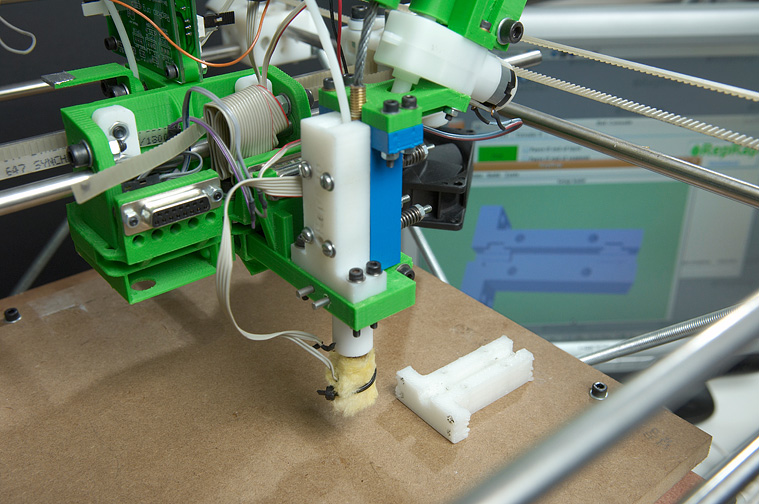Baboi
Features:
Atmel ATmega 2560 with ATmega16U2
Flash Memory: 248KB
SRAM: 8KB
EEPROM: 4KB
Input Voltage: 12V
clockSpeed: 16MHz
MircoSD slot: Yes
LCD pins: Yes
Joystick: Yes
Motor Driver: 4 x Integrated Allegro A4982
PWN Fan: Yes
Heatbed: Yes
Endstops: 5
External Serial ports: Yes
External I2C ports: Yes
External Reset Pins: Yes
Four integrated Allegro A4982 Stepper Driver
-Thermal shutdown circuitry
-Short-to ground protection
-Shorted load protection
Buildin Push-Push microSD card socket
2 N-MOSFETs for Extruder and Heatbed control
1 N-MOSFET for low power PWM Mosfet driven outputs
External Reset button for emergency stop
External 5V supply and GND for any other modules
External Joystick connection pins for manual control
External LCD connection pins for standard 20x4 LCD
Extra pins available for Raspberry Pi expansion and development;
RX,Tx and GND
SDA, SCL and GND
Physical Characteristics
4-Layer PCB with proper ground plane and power distribution networks
The maximum length and width of the Baboi are 115 and 60 mm respectively, with the USB connector and power
terminals extendng beyond the former dimension. Three screw holes allow the board to be attacted to a surface or case. Baboi is deigned to be compatible with most of 3D printers in the current market.
Further from that, UART(serial port) is also connected as external pins for Raspberry Pi for further development uses.
USB overcurrent Protection
Babo has a resettable polyfuse that protects your computer's USB ports from shorts and overcurrent. Although most computers provide their own internal protection, the fuse provides an extra layer of protection. If more than 500 mA is applied to the USB port, the fuse will automatically break the connection until the short or overload is removed.
